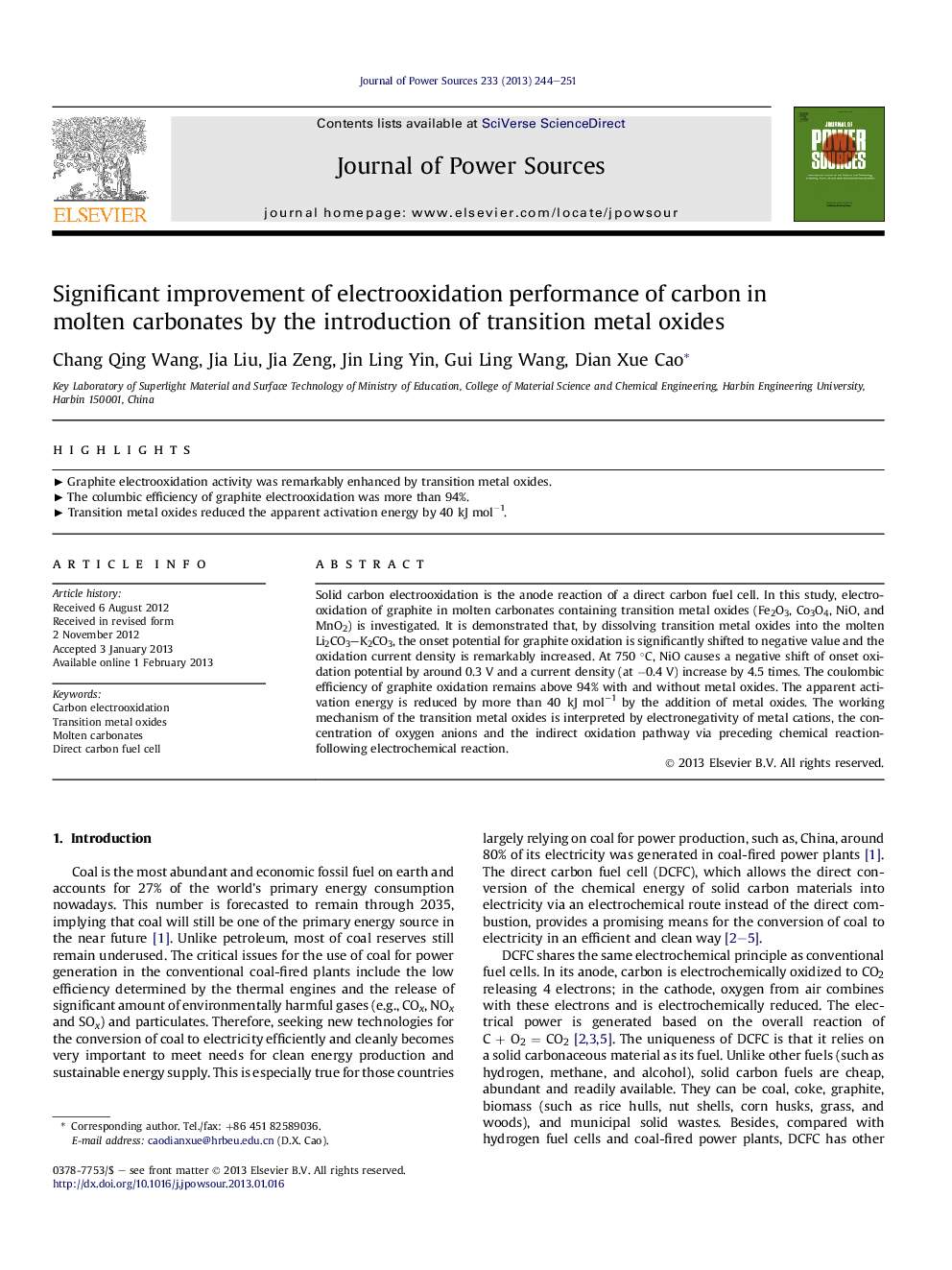| Article ID | Journal | Published Year | Pages | File Type |
|---|---|---|---|---|
| 1292961 | Journal of Power Sources | 2013 | 8 Pages |
Solid carbon electrooxidation is the anode reaction of a direct carbon fuel cell. In this study, electrooxidation of graphite in molten carbonates containing transition metal oxides (Fe2O3, Co3O4, NiO, and MnO2) is investigated. It is demonstrated that, by dissolving transition metal oxides into the molten Li2CO3–K2CO3, the onset potential for graphite oxidation is significantly shifted to negative value and the oxidation current density is remarkably increased. At 750 °C, NiO causes a negative shift of onset oxidation potential by around 0.3 V and a current density (at −0.4 V) increase by 4.5 times. The coulombic efficiency of graphite oxidation remains above 94% with and without metal oxides. The apparent activation energy is reduced by more than 40 kJ mol−1 by the addition of metal oxides. The working mechanism of the transition metal oxides is interpreted by electronegativity of metal cations, the concentration of oxygen anions and the indirect oxidation pathway via preceding chemical reaction-following electrochemical reaction.
► Graphite electrooxidation activity was remarkably enhanced by transition metal oxides. ► The columbic efficiency of graphite electrooxidation was more than 94%. ► Transition metal oxides reduced the apparent activation energy by 40 kJ mol−1.
